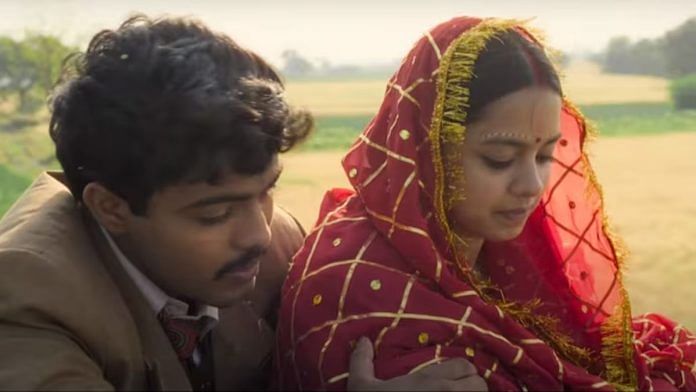Kiran Rao’s Laapataa Ladies shows feminism can be gentle and foster genuine change. Instead of raging against Sandeep Reddy Vanga’s brand of ‘alpha males’, Rao’s film offers a proverbial chuckle. Her message of empowerment is impactful because of its simplicity, humour and wit.
Laapataa Ladies is a refreshing break from films like Vanga’s Animal (2023), countering its regressive and violent ideas without so much as trying. Written by Biplab Goswami, Sneha Desai and Divyanidhi Sharma, Laapataa Ladies’ storytelling is simple but never simplistic. Its gaze never panders to an urban audience waiting to ridicule village ways. Instead, it turns inward to show how India’s beating heart is – and will always be – its rural world.
The revolution in Laapataa Ladies isn’t over-the-top. It unfolds in the realm of the ordinary and is even flawed at times. It’s a realistic portrayal of common peoples’ struggles and experiences, never ceasing to poke fun at existing systems. It balances itself like the world around us–big changes take time, but small steps can lead the way. It comes as a soothing antidote to the hypermasculine storytelling that now seems to dominate Indian cinema.
Simple revolution
The women in the movie do not suddenly start questioning everything around them, or swear, abuse and break away from their families. Instead, they discover female friendships, the joy of earning their own money, and the freedom that comes with daring to dream. The fact that Rao’s film never gets preachy is its biggest selling point.
It is reminiscent of Vikas Bahl’s Queen (2013), except that it is more subtle and never strays from the path of village life. Queen showed everyone the importance of female friendships and self-love – which, after all, are English terms and urban concepts. In Laapataa Ladies, changes take time and choosing oneself is hard, but it can all be achieved.
Also read: ‘Everything happening now has roots in 90s’—Why Varun Grover chose it for ‘All India Rank’
No utopia
Laapataa Ladies is a Shakespearean comedy of errors, centered around the ghoonghat (veil) traditionally worn by many Indian women. It tells the story of Phool (Nitanshi Goel) and Deepak (Sparsh Srivastava of Netflix’s Jamtara fame), who take a scooter, boat, bus and train ride home after their wedding, only to alight on different stations. Deepak accidentally takes another newlywed woman, Pushpa Rani (Pratibha Ranta), home, and what happens next forms the crux of the story.
Rao’s film is as nostalgic as it is light-hearted. It is set in 2001, evident from handpainted posters of Kaho Naa… Pyaar Hai (2000), and bulky Nokia mobile phones. People still listen to radio cricket commentaries, finding joy in the mundane.
But when things take a turn for the dark, the story dials back to what it really wants to do–give a sense of hope.
In Laapataa Ladies, corruption persists, police officers continue to take bribes, and not all women can shed their oppressive ghoonghat. However, they all embark on a journey of personal growth, carrying their valuable experiences into the next chapter of their lives.
The world of Laapataa Ladies
Rao’s movie celebrates ordinary women – their lives, laughter, complaints and heartaches. And the village is a character in this magical story of female empowerment, much like Amazon Prime Video’s Panchayat (2021). From dusty streets and slow-paced rural life to pest-threatened crops, Laapataa Ladies highlights the best and worst aspects of village life.
There’s no militant feminism in Rao’s film – it has space for all kinds of women. Phool, who wishes to be a good partner to her husband; Pushpa, who wants to carve her own path, and Manju (Chhaya Kadam), who refuses to endure domestic abuse. “ My husband used to say, people who love you have the right to hit you, so I hit him back,” she says, smiling but refusing to continue a toxic relationship. All three women choose what works for them, and that is the film’s triumph.
(Edited by Zoya Bhatti)



